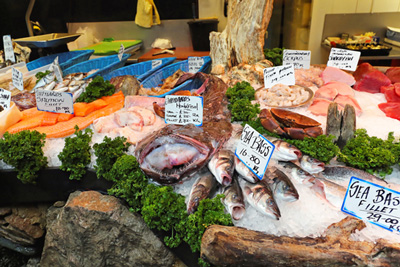US Seafood industry needs federal help to bounce back
- Like
- Digg
- Del
- Tumblr
- VKontakte
- Buffer
- Love This
- Odnoklassniki
- Meneame
- Blogger
- Amazon
- Yahoo Mail
- Gmail
- AOL
- Newsvine
- HackerNews
- Evernote
- MySpace
- Mail.ru
- Viadeo
- Line
- Comments
- Yummly
- SMS
- Viber
- Telegram
- Subscribe
- Skype
- Facebook Messenger
- Kakao
- LiveJournal
- Yammer
- Edgar
- Fintel
- Mix
- Instapaper
- Copy Link
Posted: 24 November 2020 | Joshua Minchin (New Food) | No comments yet
As the US sees a steep decline in seafood sales following restaurant closures, the rise in takeaway sales provides some comfort for an industry in need of federal help.


The US seafood industry needs a federal leg up if it is to return to pre-pandemic levels
The US seafood industry has been in decline since the emergence of the COVID-19 pandemic, and research shows that targeted federal assistance will be necessary to bring it back.
University of California Santa Barbara aquaculture and fisheries professor, Halley Froehlich, and colleagues, suspected as much early on in the pandemic, but with the seafood industry being so large and complex, researchers say the warning signs were not that easy to spot. As a result, financial assistance in that direction has been slow.
“Seafood is part of the narrative that I would say doesn’t get as much attention as something like agriculture,” said Froehlich. “And that certainly appears to be the case when we’re looking at something like the CARES Act, the federal funding source specifically passed to provide economic relief in the US.”
This is mainly due to the fact that policymakers lack sufficient real-time data to see how the seafood industry is faring in the time of lockdowns and social distancing, said the study’s lead author, University of Vermont ecologist Easton White.
“One difficulty is that a lot of this data isn’t released until months and years later,” White said. From the boat to the table, data is generated that must be gathered and processed before it gets released, he explained.
The pandemic is a rapidly evolving situation and the seafood industry can’t afford to wait. To get a ‘big-picture’ look at the early effects of COVID-19 on US fisheries and seafood consumption, Froehlich, White and fellow fisheries data experts synthesised multiple sources from across the seafood supply chain, including some unconventional real-time data sets.
“We looked for different indicators of the effects of Covid on seafood and fisheries in general,” White said. In addition to federal fisheries reports and customs data, the researchers looked to news reports and Google search trends for seafood and seafood market foot traffic.
Lessons learned
The lockdowns and closures caused a huge drop in economic activity for the seafood sector, from which many still struggle to recover. Using data from January to September 2020, the researchers calculated a 40 percent decline in fresh seafood catches, a 37 percent decline in imports, and a 43 percent drop in exports relative to the same time last year. These impacts are expected to reverberate across the globe, as the US is one of the top exporters and importers of seafood.1
At the same time, demand from restaurants – the main driver of seafood spending in the US – virtually disappeared as establishments locked down. The researchers also identified an uptick in seafood delivery and takeout, which has been picking up some, but not all, of the slack in restaurant demand.
“It’s unclear to us the level of substitution and what it means in the long term, especially how people are consuming seafood at home,” said Froehlich, who is interested in how this consumption pattern might influence the demand for certain species over time.
Because of COVID-19’s variable effects across the entire seafood industry, the researchers say that future federal support should be aimed at locations and sub-sectors “most affected by the pandemic: fishery-dependent communities, processors and fisheries and aquaculture that focus on fresh products”.
“A lot of communities are dependent on fisheries,” White said. “There are fisheries for tourism, for livelihoods, and a lot of indigenous communities focus on fishing. And it’s not just fishing but also fish processing, all the different people that are involved. If you have Covid popping up just when you’re about to go fishing and make all the money you’re going to have for the year, now you can’t make any of that.”
Froehlich implored legislators to act now in order to protect the US seafood industry from such devastation going forward. “As new mandates and legislation around fisheries and aquaculture are being rolled out during COVID-19 at the national and state levels, we have an opportunity to really think about what the actual targets and goals are. How do we build in more resilience now, instead of retroactively, when the system gets disrupted again? Because it will.”
References
- https://onlinelibrary.wiley.com/doi/10.1111/faf.12525
Related topics
COVID-19, Processing, Regulation & Legislation, Research & development, Supply chain, Trade & Economy
Related organisations
University of California Santa Barbara, University of Vermont









